KYRGYZSTAN
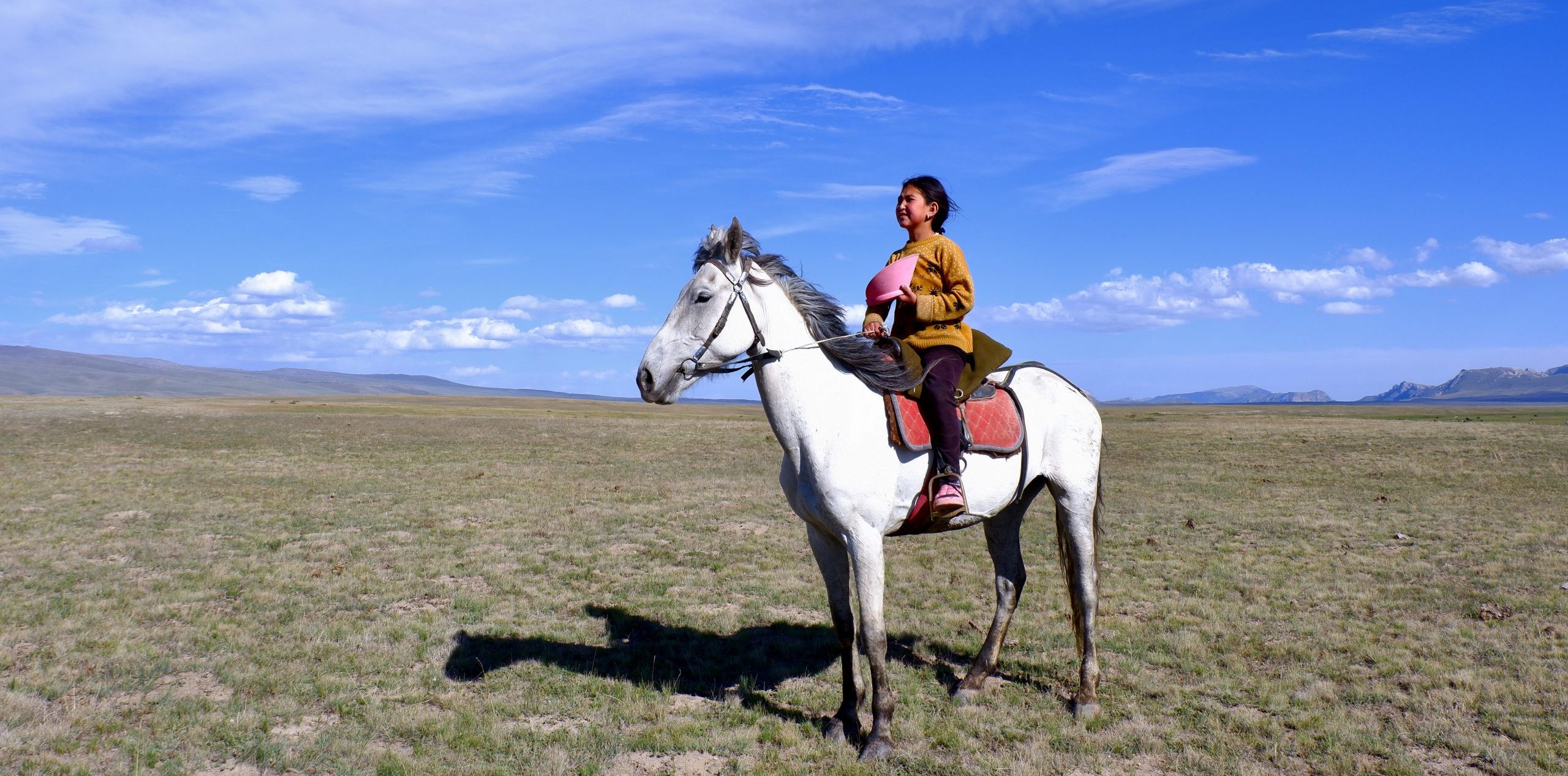
Only recently discovered – and immediately in love!
Kyrgyzstan combines many exciting aspects. Ancient nomadic culture had to change during the Soviet era, but fortunately never lost its roots. Every summer, many families set out with their animals and build their yurts on the best campsites. They are rather seminomadic, i.e. in winter they live in villages and do not move further afield. The mountains are uniquely beautiful. 90% of the country lies above 1,500 m in the Tianshan, Altai and Pamir mountains. This means that little agriculture is possible, but livestock farming thrives. Only 6.6 million people live on almost 200,000 square kilometres.
Kyrgyzstan comes from the word “kirkkyz” = forty. This means that it is assumed that there were 40 tribes that made up the Kyrgyz people. This is also symbolised in the national flag with the 40 rays around the yurt roof symbol.
Nature with its impressive mountains, numerous glaciers, many rivers, varied fauna and flora is a great treasure of Kyrgyzstan. There is hardly any other region with such an enormous variety of mountains as in Kyrgyzstan. However, the idyll is also threatened by earthquakes and glacier melt as well as other consequences of climate change. In any case, a trip offers a good chance to experience nature with its many facets.
You get along well with the people. Very little English is spoken (Russian, on the other hand, is widely spoken), but people make an effort to understand and communicate. To really learn more about life in Kyrgyzstan, we strongly recommend a guide.
Economically, Kyrgyzstan does not have it easy, it is a poor country. After more than 120 years of Russian rule, the country has yet to develop its own economy with trading partners and self-organisation. A lot of money comes into the country through Kyrgyz living and working abroad; it is said to account for 25% of the GDP. Tourism is an emerging sector with enormous potential. Nothing is overcrowded and yet it has an incredible amount of beauty to offer, friendliness and plenty of space for discovery.
Accommodation
The tourist infrastructure is not (yet) very advanced, but in principle you can find a clean place to sleep everywhere – sometimes privately. Great are the overnight stays in yurts (camps), mostly located in particularly beautiful nature. There is a small catch: the toilet is usually a little further away (most households, especially in the countryside, do not have a toilet in the house). There are always a few guesthouses or small hotels in the places that are important for tourism. Only big star hotels are scarce, except in Bishkek.
Since Kyrgyzstan is too high for sufficient agriculture, animal husbandry has traditionally prevailed here and with it a very meat-heavy cuisine. But especially in season, vegetarians can also enjoy a variety of delicious dishes. Our contract accommodation has been well trained and so it is no problem to eat vegetarian. Those who like meat will enjoy many traditional dishes.
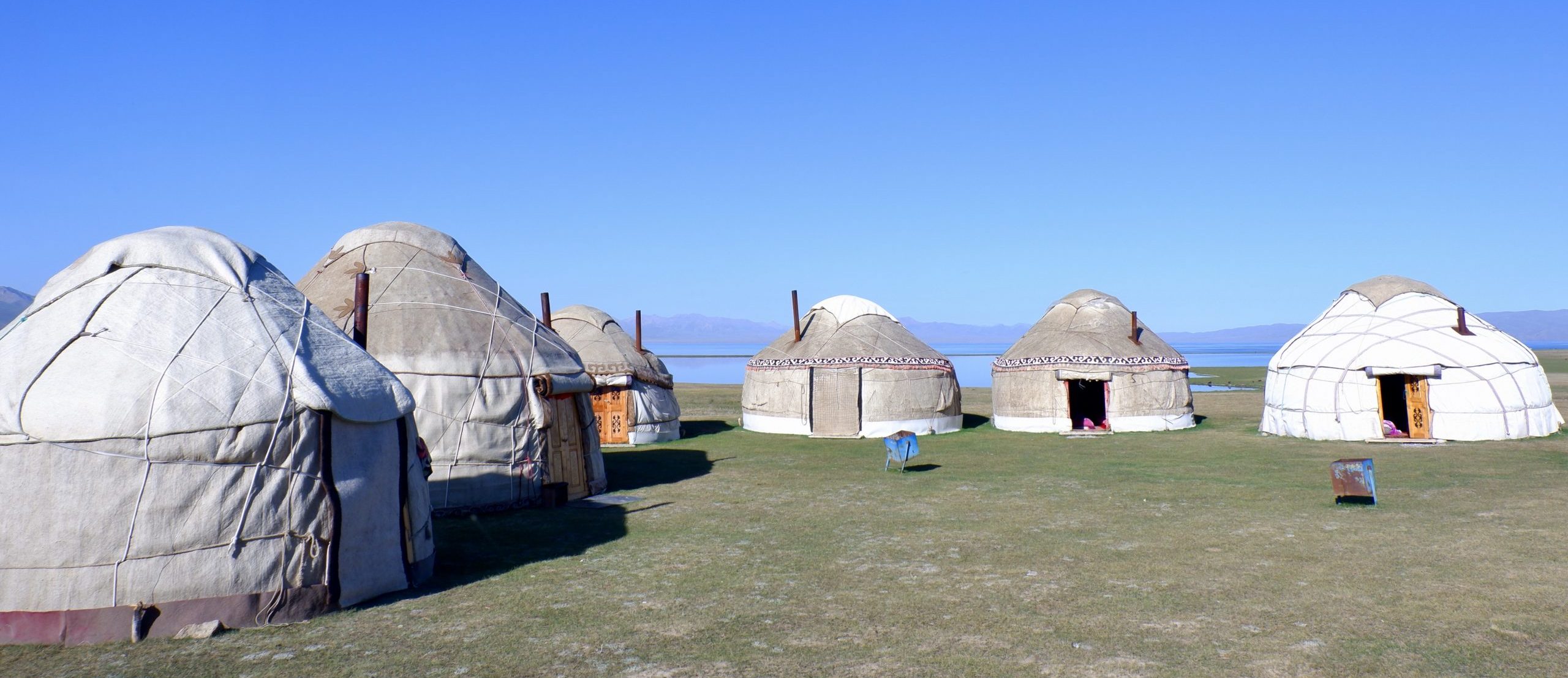
Culture
The Kyrgyz have preserved their culture during the long Soviet period or brought it back to the surface afterwards. The nomadic culture plays the biggest role here. During the nomadic season, you can definitely experience this very well when you go to the mountains. Eagle hunting has also been cultivated – at several places people are ready to explain it to travellers. Also interesting is the Sunday early morning animal market in Karakol, one of the largest in Central Asia.
You can visit the yurt building at Issyk Kul. Sheep’s wool is also used for felting. Carpets (shyrdak) and wall hangings live on typical Kyrgyz patterns, each of which also has a meaning. We offer felting demonstrations – and also the opportunity to sew a mini shyrdak. There is a kind of national headdress for men – the kalpak. Get an explanation of the customs and history of this too. There are also typical Kyrgyz patterns/ornaments on the kalpak – so it is worth going deeper into this.
Literarily, Kyrgyzstan has two great works to offer: 1. the Manas epic, one of the longest epics in the world with almost 500,000 verses. There are public performances and also a new record set in 2021 with 14 hours of recitation. 2. Chingiz Aitmatov, whose literary work has been translated into many languages. His face appears very often.
Striking for many travellers are the countless statues and monuments. Be sure to hear the stories of some of them!
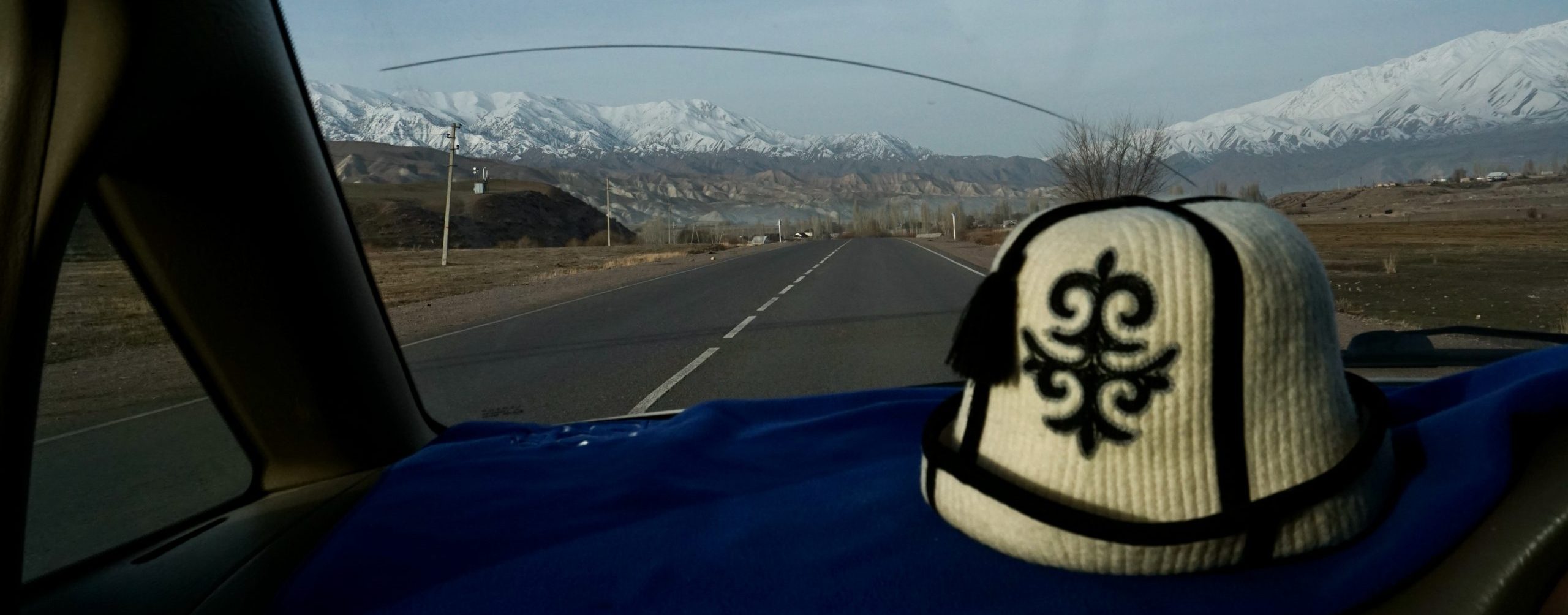
Trekking
Kyrgyzstan offers a wide variety of trekking and hiking opportunities. Day hikes are possible from rather short walks to long days and almost everywhere. Absolutely worthwhile is a trip with many day hikes instead of a trek of several days, as this allows you to get to more different areas and still experience the mountain world on foot. Multi-day treks are available from 2 days to weeks. And then we also have choices of accommodation (take along tent or yurts and some homestays along the way) as well as getting around (on foot or on horseback). Luggage is either transported or you carry the necessities yourself and the large luggage is transported to the destination. The mountain areas are quite different in terms of altitude, dryness, steepness, terrain (rock, grass, scree, etc.). Definitely, Kyrgyzstan is a country whose mountain world has something to offer for everyone! Tell us about your experiences and expectations – we will find something suitable for you!
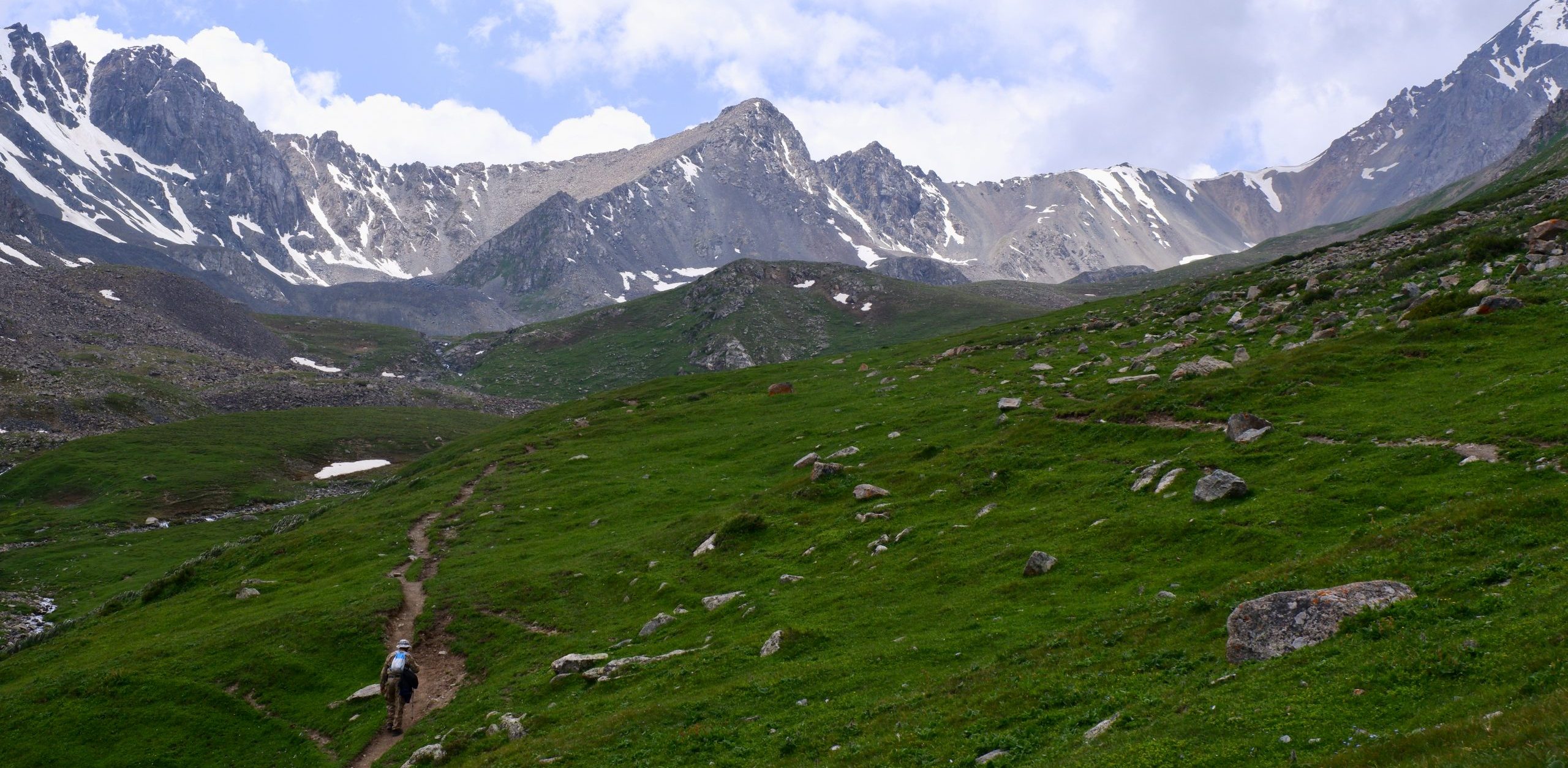
Islam
Kyrgyzstan has been Islamic since the 10th century, but still has influences from earlier faiths (Shamanism and Zoroastrianism). Of course, Islam was also restricted during the Soviet era and is now growing stronger again. Numerous mosques were built with the support of Saudi Arabia and Turkey. Some of them are not yet filled with life, but customs such as wearing headscarves and observing Ramadan as well as prayers are becoming more widespread. The more southern, the more obvious Islam is. Those who have travelled in other muslim-dominated areas will find it very moderate in Kyrgyzstan. Over 70% of the population is counted as muslim.
A special feature are the Dungans, immigrated muslim Chinese , who have found a new home here where they can continue to practise their old customs. The core area is in Karakol and the surrounding area with a very special mosque, delicious food and open doors, i.e. arranged visits are possible.
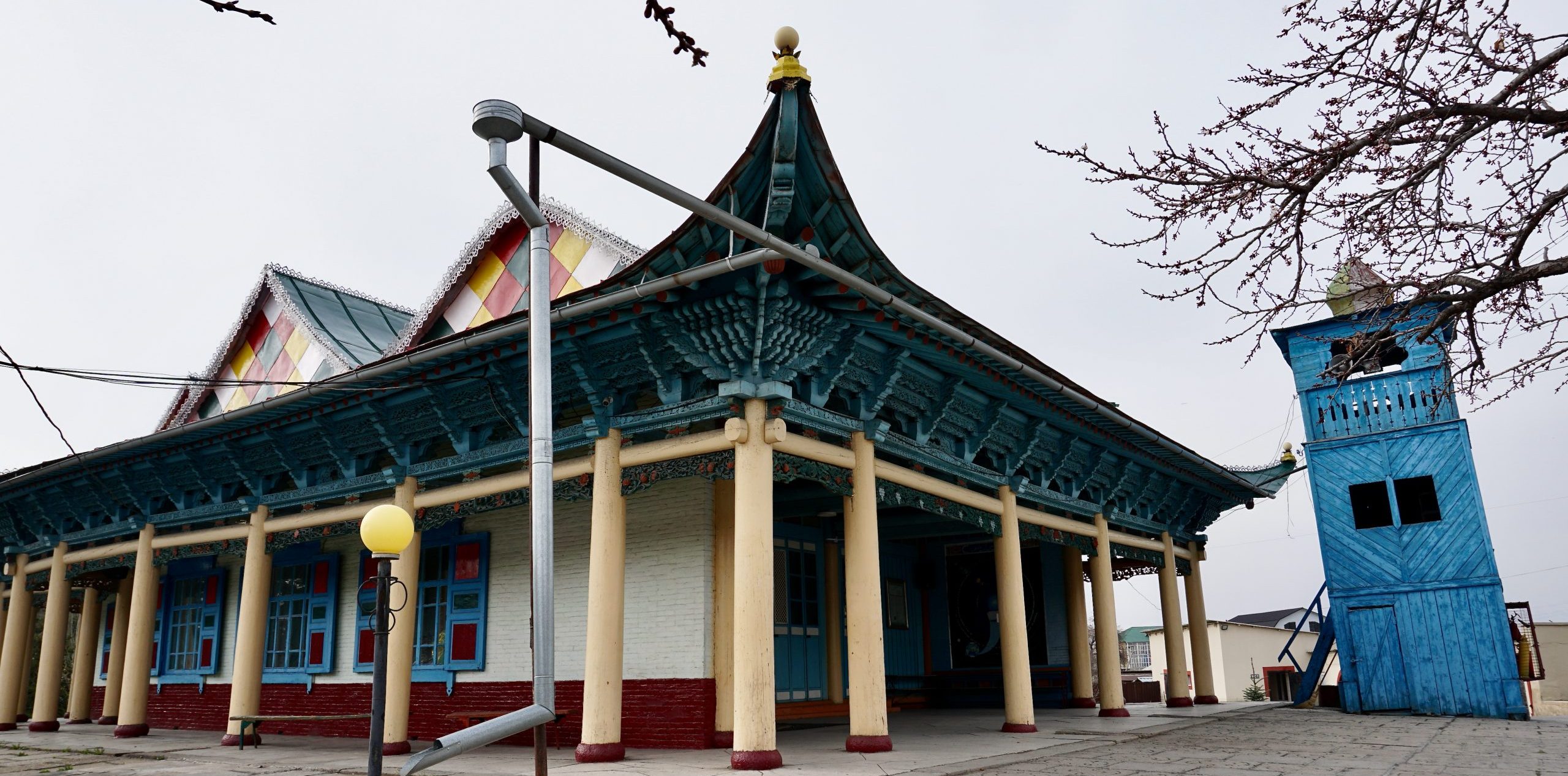
Villages
As in most countries, life in the villages is immensely different from that in the larger cities. Kyrgyzstan has 25 towns and very many villages. Most of the inhabitants live from agriculture – mostly a rather difficult endeavour that does not provide much income. Migration, especially of young people, is high. Not only is it easier to experience the beautiful countryside here, but it’s also a good place to take life down a notch and focus on the aspects of village life. How are the people here, what is their everyday life like, what occupies them and how has life changed in comparison to the Soviet era, what are the structures like – all these are interesting questions that you can pursue at leisure.
Some villages have the typical Soviet planned square of streets, some are more like street villages, i.e. the houses line up along a street, and some have grown more organically. A small house on a large plot of land with a vegetable garden/orchard is often protected by walls. Due to migration, many buildings are empty, and the lack of money is visible in the decay of buildings. Some villages have invested in tourism – Jyrgalan near Karakol is a good example. Less visited, but all the more beautiful is Kyzyl Oi, one of the few villages from the times of the Silk Road. We also have other village visits on offer, where only one family has opened their house to guests.
A special sight in Kyrgyzstan are the cemeteries – a visit is best planned during a stay in a village. Magnificent memorial buildings, yurt-style wire scaffolding and simple memorial stones on unremarkable piles of earth combine to form an ensemble rich for discovery. Simple memorial plaques with names and dates (more in the Muslim sense) stand next to stones with large portrait drawings and memorial plaques with photos of the deceased.
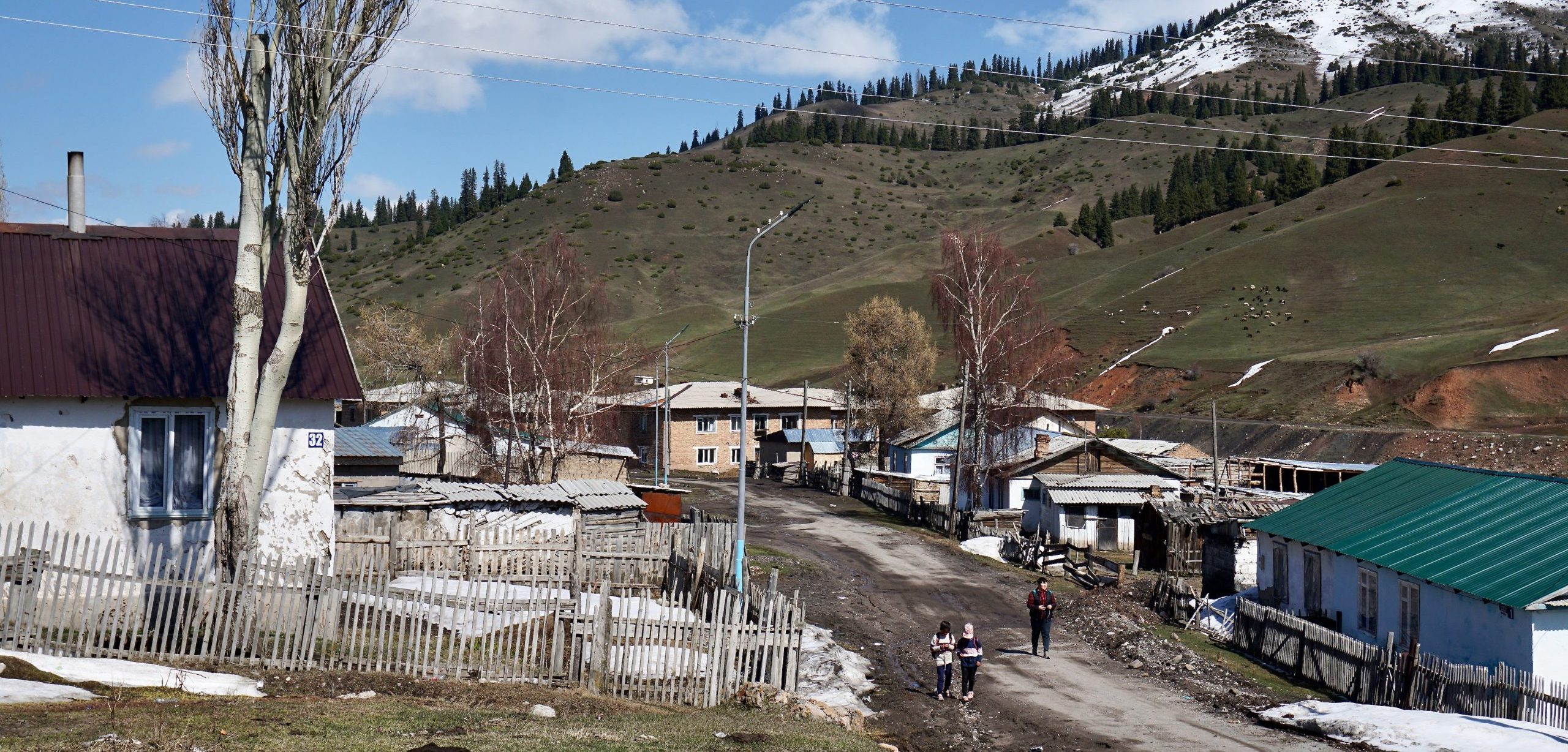
Hot Springs and Sanatorium
In Kyrgyzstan there are various opportunities to bathe in hot springs. Especially after a day of trekking or in the cooler/cold season, these are special moments of enjoyment. Be sure to bring a bathing suit on your trip! A very popular place for this is Altyn Arashan, accessible either during a trekking tour to Ala Kul or directly as a jeep tour.
A very special experience is a visit to a sanatorium. In Soviet times, many were built so that workers could relax and regain their strength. Today, many Kyrgyz still like to go to a sanatorium for a few days to take care of their health. Stays of 3 days or more, including medical consultations and treatments, are recommended.
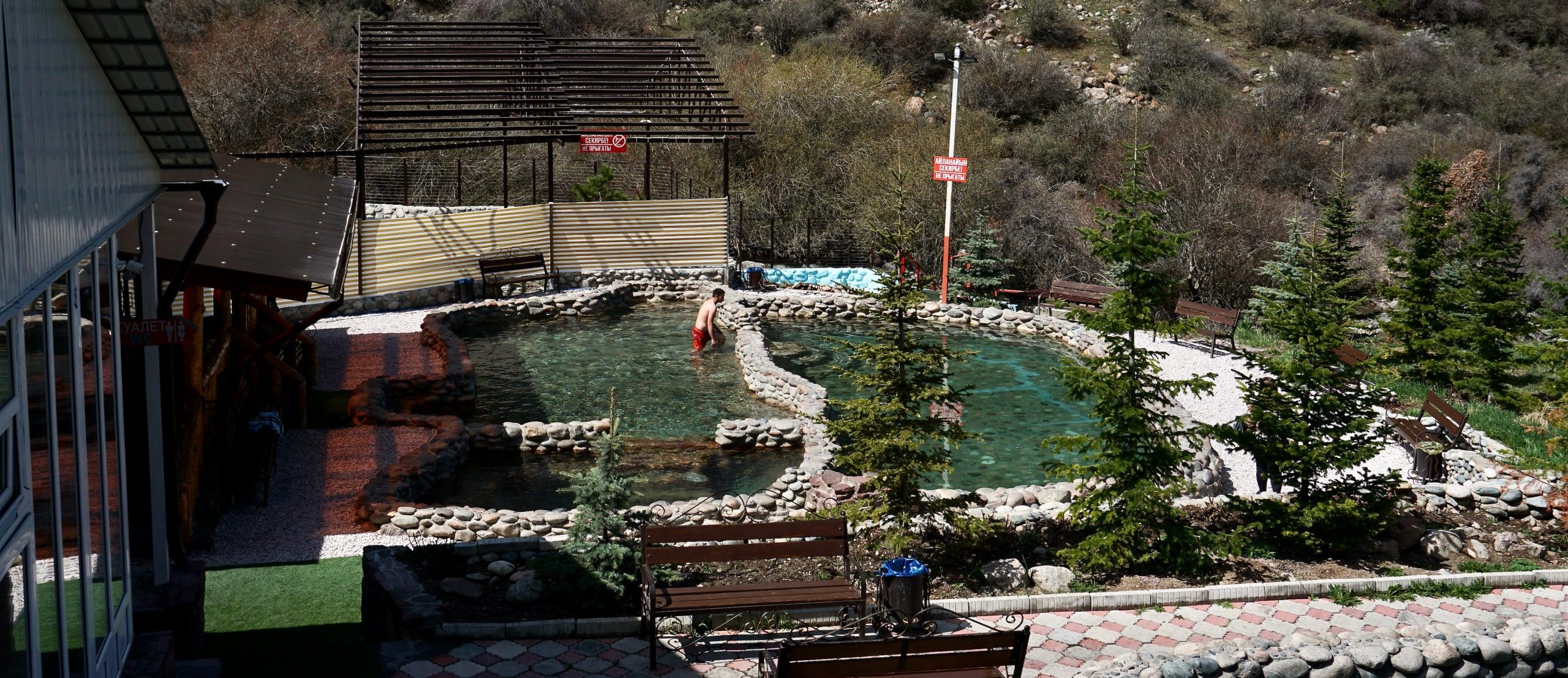
Summits
At 7,134 m, Peak Lenin is the highest peak that can be climbed in Kyrgyzstan. It actually belongs to Tajikistan, but can also be climbed from Kyrgyzstan or there is also a trekking tour to the base camp. There are also many other peaks nearer 5,000 m – tell us about your experiences and wishes – we will find the right peak for you!
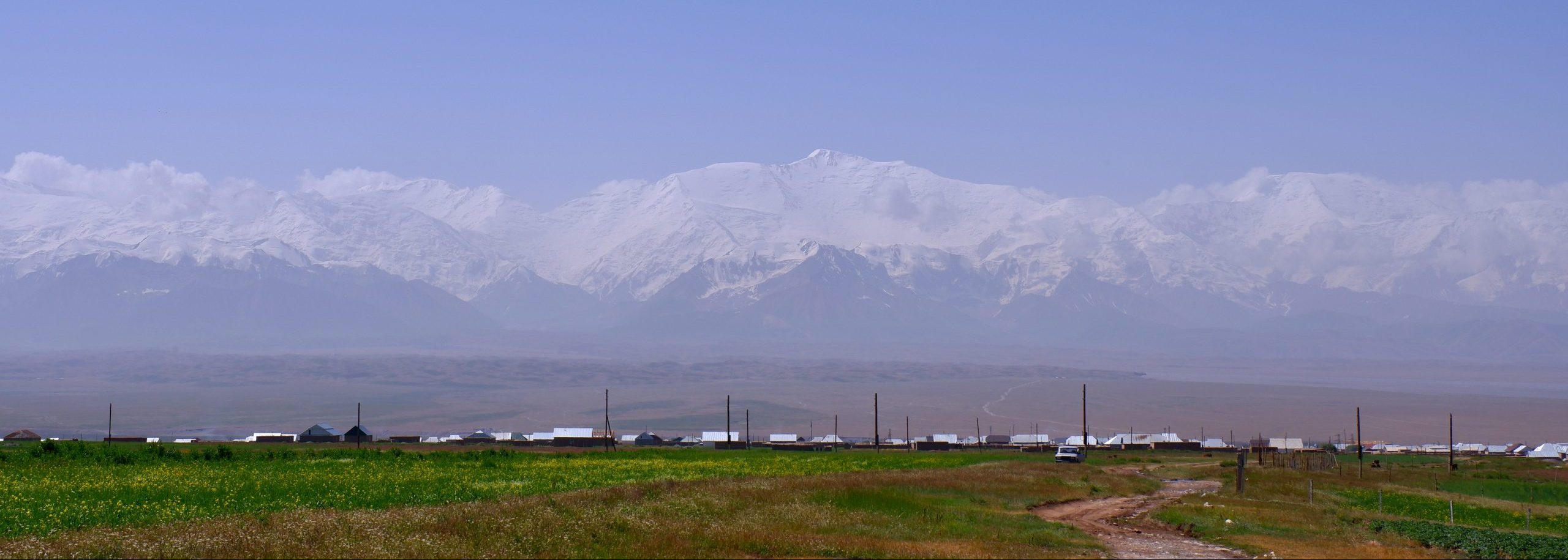
Lakes
Issyk Kul is the second largest (after Lake Titicaca) mountain lake in the world and is located in eastern Kyrgyzstan. On its northern shore there are beaches and resorts where locals also like to spend their holidays. The southern shore is less developed, but also offers many interesting things (for example the red rocks at Jeti Oguz and in Skazka Canyon). The large city of Karakol is to the east and is a good base for excursions into the mountains, exploring the Dungan culture, Prziwalski Museum, petroglyphs and much more. A good long time can be spent here – including lake swimming in the warmer months.
Another highlight is Son Kul at 3,000m in the middle of a huge plateau. In summer, nomads with their horses, cows and sheep populate the seemingly endless vastness. Yurt camps provide a close-to-nature experience and cosiness for travellers. Horses can be hired for a short or extended ride. The lake is accessible via dusty jeep tracks or in the form of a trekking tour on foot or by horse. As it can be quite cool even in summer, take warm clothes and stay 2 nights!
The turquoise shimmering Toktogul Reservoir in the middle of a desert-like landscape is special. The lakes of Sary Chelek are also beautifully situated with the possibility of hiking. Kel Suu in the south can only be visited with a permit. A trekking tour on the Ala Kul near Karakol is very popular.
Besides the large Issyk Kul, Kyrgyzstan has countless other lakes of all sizes. Some can only be reached on foot or horseback, others by car. We assure you: you can hardly spend any time in Kyrgyzstan without seeing at least one of the beautiful lakes. Of course, we will be happy to fit some into your tour plan!
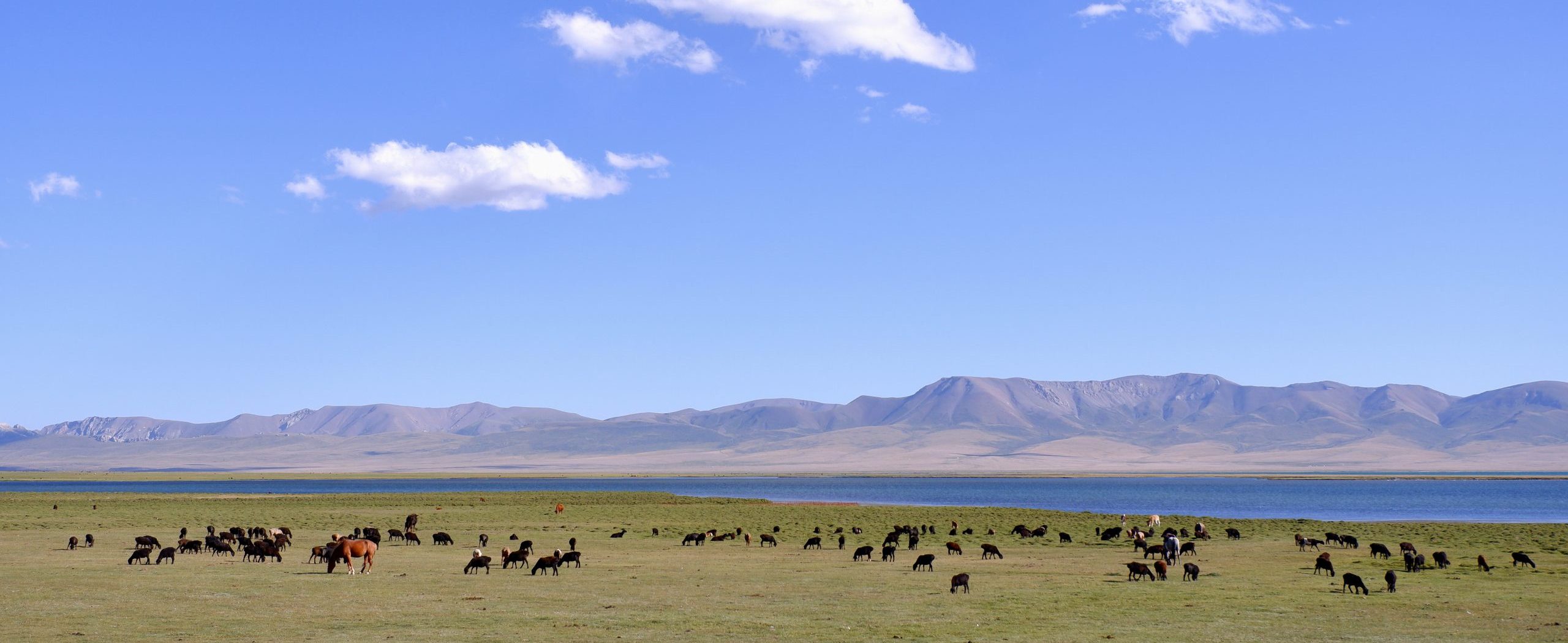
Bishkek
Bishkek is the capital and only city in Kyrgyzstan with a population of just over 1 million. As a former caravan station on the Silk Road, the city has undergone many renamings and has been called Bishkek since 1991. The city lies at an altitude of 800 m and has the towering snow mountains of Ala Archa to the south. Architecturally, the Soviet style of building dominates: wide boulevards in a chequerboard pattern, Soviet blocks, marble-clad public chunky buildings and many green parks. Because of these parks, Bishkek is considered a very green capital. Besides cafes and other eateries, Bishkek offers some interesting sightseeing: the bustling Osh Bazaar, the interesting historical National Museum, cultural institutions such as the Opera and Ballet House, the spacious lively Ala Too Square with changing of the guard parade under the big Kyrgyz flag, the Panfilova Amusement Grounds, the old railway station and numerous parks. It’s a great place to spend time!
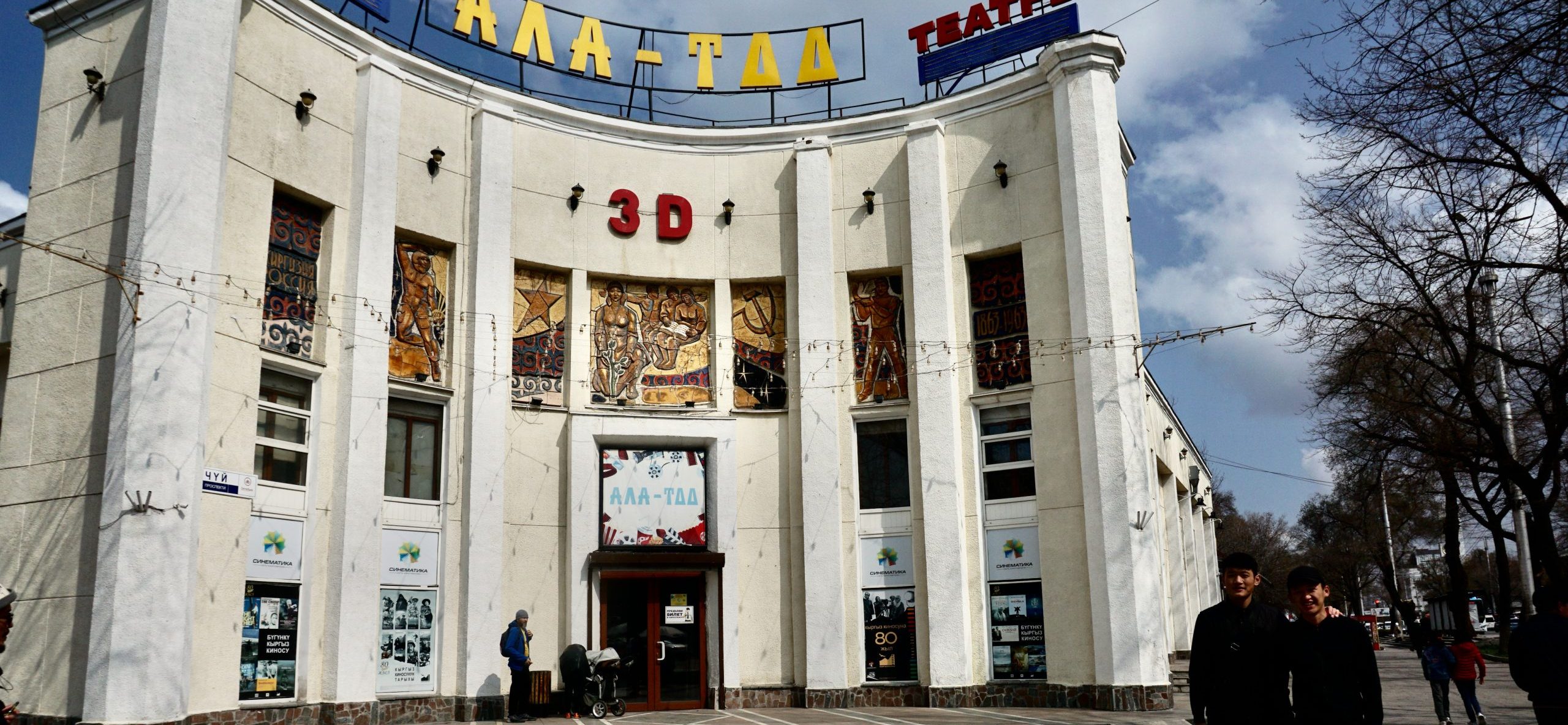
On the road
Of course, the most comfortable way is by (off-road) car with driver, which will take you to the remotest corners of Kyrgyzstan. The road conditions are rather challenging with some very well-maintained stretches in between. There are hardly any vehicles without scratches in the windscreen. Getting around by public transport is exciting and cheap. For overland routes, there are shared taxis, marshrutkas (minibuses) and buses. Some run fixed routes at fixed times, some only start when even the last seat is occupied. In a few cases, private cars also stop on empty stretches of road in the countryside and are given a small fare.Together with the guide, we recommend travelling at least one stretch by public transport.
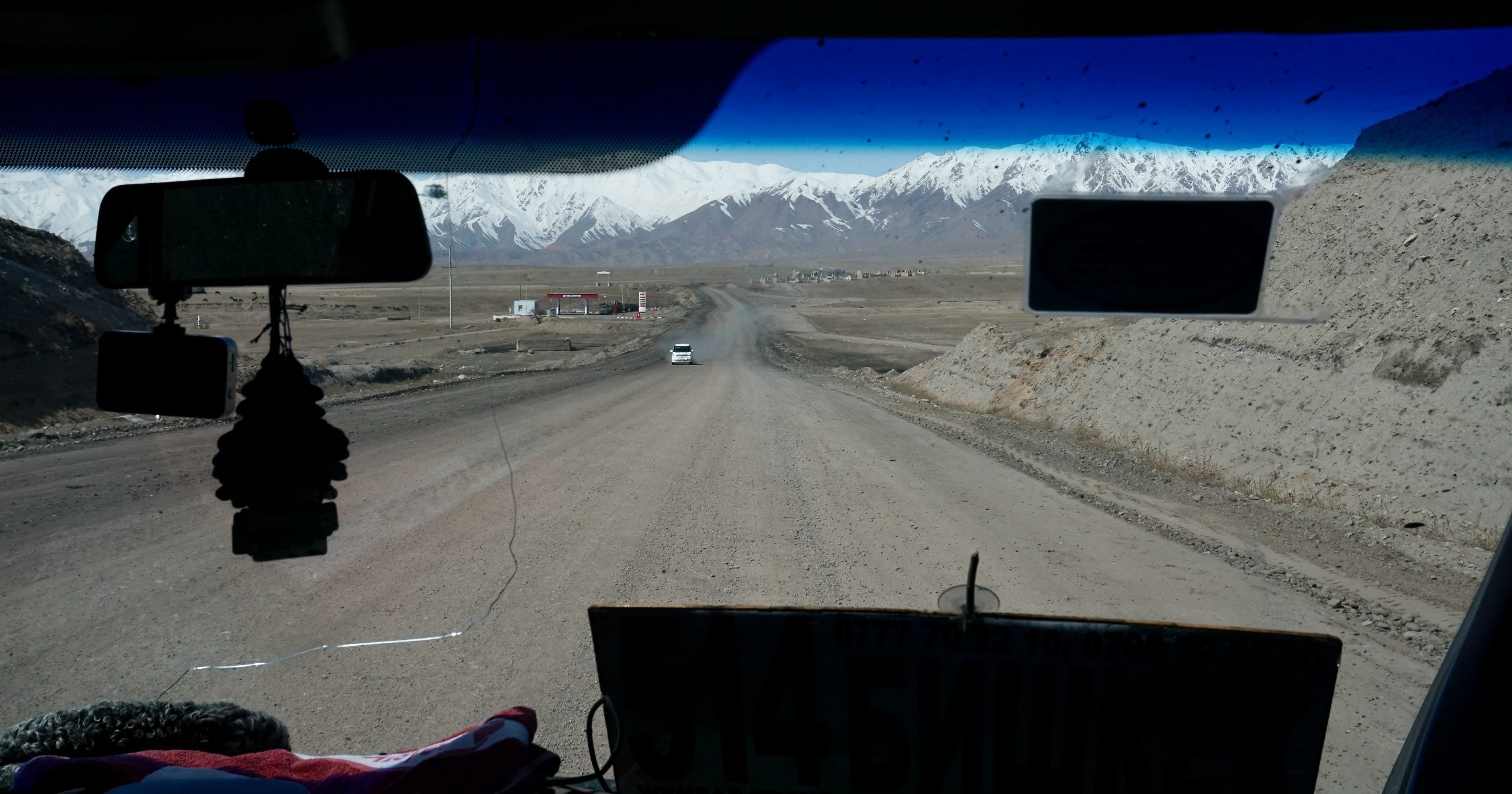
Blog
There are blogs from my own travels in spring 2022 and summer 2023 and thus a good opportunity to get a small impression:
